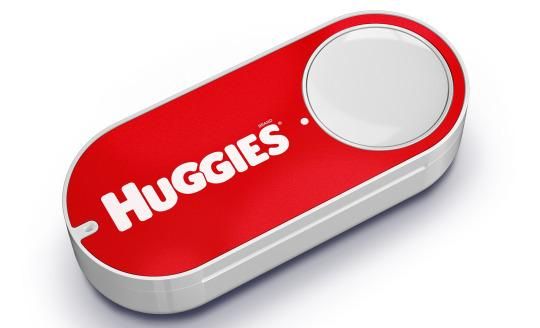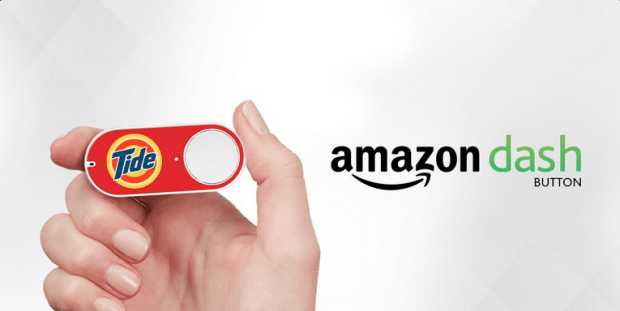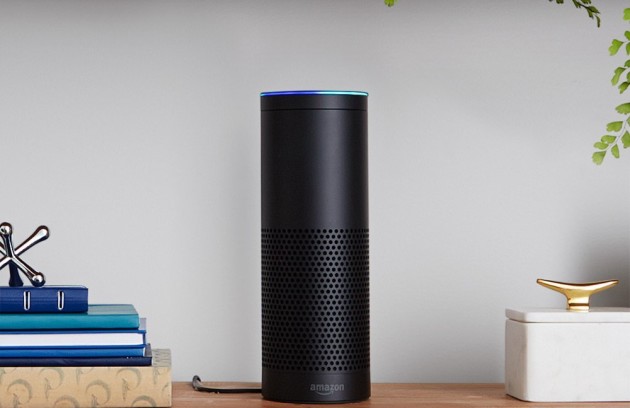
Amazon developments in IoT: a force to be reckoned with
If you’re developing products, services or platforms for the Internet of Things (IoT), don’t ignore Amazon. Like a sleeping giant awakening, over the last six months Amazon gradually rolled out parts of its IoT offering and unveiled glimpses of its overall strategy. But these are just the tip of the iceberg. In addition to optimizing its back end AWS offerings for the Internet of Things, Amazon is laying the groundwork to be a major force in the IoT, especially in the connected home and office.
Amazon has progressed a great deal from its early days as an online bookstore, over time developing Amazon Marketplace, enabling other sellers to use the Amazon eCommerce platform, then Amazon Web Services (AWS), now the largest public cloud provider and first stop for many developers. Recently the giant expanded into other sectors including music, entertainment and logistics. With the relentless expansion of Amazon into new sectors, it should come as no surprise that it has also set its sights on the Internet of Things.
Amazon in IoT today
The Internet of Things presents Amazon with an enormous opportunity: billions of devices connected to the Internet, exchanging massive amounts of data that need to be stored, processed and analyzed. Sounds like a platform play with an ecosystem of thousands of players that requires immense scale. Right up Amazon’s alley. On the back end, Amazon already has enormous investments in AWS infrastructure that can handle IoT requirements. Several months ago at its Re-Invent conference, Amazon extended that infrastructure to embrace the IoT. It announced a slew of IoT-related products to facilitate the use of AWS for IoT device connectivity to Amazon’s back-end cloud services including:
- AWS IoT Framework
- SDKs for developers to work with IoT devices
- Kinesis Analytics tuned for analyzing high-volume streaming data
- Special data ingestion devices
- AWS IoT Gateway
- AWS IoT Rules Engine
- AWS API
- AWS Registry to track IoT devices
In addition to providing the above tools for developers, Amazon also offers affordable pricing – expected to be 250K free 512 byte messages per month for one year and enterprise plans for $5 per million messages. This aggressive price point will allow cost-effectively enabling customers’ IoT devices to send small messages and data to Amazon’s cloud for storage and analysis.
Amazon’s consumer-facing IoT initiatives
In addition to a robust back-end cloud platform and the above tools to support developers and OEMs in the IoT, Amazon has a number of customer facing products and partnerships that will further cement its place in the minds of IoT consumers.
Dash Buttons: Introduced last year, Dash Buttons are small thumb-sized, WiFi-enabled “buttons” that can be affixed to any device. They connect with a customer’s Amazon Prime account enabling customers to order products at the touch of a button.

For example, a Tide Dash Button stuck on your washing machine or an HP Inkjet Dash Button attached to your printer could automatically order more detergent or a new cartridge at the touch of a button. In many ways, this is an extension of One Click ordering morphed from the Amazon website to a physical object in your house. Now you don’t even need to go online to reorder; you can just touch a Dash Button to get what you need or push a button to have a pizza delivered to your door and charged to your Amazon account. This further reduces the friction of ordering from Amazon, improves brand loyalty and has the potential to boost sales of these products.
Although these seem like simple reordering buttons that will assist Amazon in its ecommerce efforts to sell more goods, they have a double purpose. In fact, these Dash Buttons are “things” in the Amazon Internet of Things and have great future potential. Hackers have already started playing with and morphing these buttons to automatically order other items or do other things as the platform has been opened up to developers. What will happen in the connected home in a few years when these buttons morph into very low-cost, motion sensors, thermostats, webcams and other IoT “things” at aggressive pricing?
Although these buttons are priced at $4.99 each, that amount is credited to the customer’s account upon placing the first order for that item. Amazon has developed partnerships with more than 30 different consumer packaged goods companies for its products. And, of course, Amazon’s replenishment services can further automate reordering by setting up standard repeat orders, especially for consumables, to be filled every week or month for certain items – at home or in the office.

Echo (Dot and Tap) powered by Alexa: These devices are electronic speakers and Internet-accessible voice-recognition systems that provide a new way to interface with the Internet of Things in a connected home or office. First shipped in 2015, the Echo was advertised during the Super Bowl and sales are reported to have exceeded three million units now.
Today many of the applications are interactive for weather, playing games, asking the Echo to play favorite artists or songs or even asking about traffic and ordering an Uber ride. More importantly, they have the ability to add “skills” that can control thermostats from Nest, Ecobee and security systems from Vivint and many other “things.’”
As an open platform, other providers are interfacing doorbells, water-sensing systems, etc. The voice recognition is supplemented by the Alexa smartphone app that provides an alternate interface to these IoT services as well as a way to configure specific settings. All in all, the Echo is really an interface to Amazon’s IoT offerings.
Alexa Venture Fund: Amazon also has a $100 million venture capital fund called Alexa (not the same as the Echo voice-recognition system). It focuses on early-stage companies that are working on voice-oriented applications and experiences that will build on the Echo voice platform and provide new IoT types of devices. Some of its investments include:
- Rachio – an intelligent water sprinkler control system
- Sutro – a smart pool monitor
- Petnet – a smart feeding appliance for pets
- Musaic – an intelligent sound system for playing music and controlling lights
- Scout – a do-it-yourself security system for homes
- Garageio – smart garage door monitor and opener
- Mojio – a connected-car tracking and monitoring system
What the future holds
What is Amazon’s growth strategy focus? As founder Jeff Bezos has highlighted, Amazon tends to focus on self-service platforms like Amazon Marketplace, Amazon AWS, Kindle Direct Publishing, etc. These enable others to benefit from the Amazon platform in a virtuous cycle that further increases Amazon’s influence and revenues. Expect its future strategy to play to these strong points:
- Deliver low-cost, good-value, easy-to-use, scalable offerings
- Build on core experience (leverage Amazon’s stack)
- Seek out inefficiencies and optimize them
- Create a platform/ecosystem that enables partnerships that can be further monetized
- Keep things really simple, technically and business model wise
- Pursue high-volume markets where Amazon can enjoy economies of scale
- Take market share in the short term, even at the expense of profits
- Optimize everything
Amazon’s recently announced replenishment offering extends beyond the home and into the office. Why not offer supplies for connected printers, air filters for furnaces controlled by Amazon Dash Buttons, toothbrushes for Phillips-connected electric toothbrushes, glucose strips for intelligent health devices, pet food for IoT pet dispensers, etc.? You can expect to see Amazon’s usual approach of a low-cost penetration strategy to grab market share first and profits later as it drives pricing down. Leveraging its relationships with 50-70 million Prime members will allow Amazon to offer very low-cost, ubiquitous, easy-to-use IoT devices to homes and businesses.
Why spend $200 on a Nest thermostat in one room when you could have a mesh network of low-cost/free dedicated Dash Button thermostats throughout your house for more granular data and control? And why not manage it all through your Amazon mobile apps on a smartphone or tablet or through the new Echo/Alexa system with voice commands? To better understand some of the dynamics at play here, see Why Nest is Down, Amazon Up, in IoT for the Connected Home.
Amazon’s partnerships with leading IoT device manufacturers and consumer packaged goods brands puts Amazon “in the cat birds seat.” It can intermediate between millions of potential IoT purchasers with whom it already has trusted billing, shipping and entertainment relationships and sell them Amazon devices and buttons or third-party IoT devices tied into the Amazon stack. And it already has a complete ecommerce, fulfillment and delivery services, plus the most efficient, cloud back end for storage and analysis of consumer and IoT partner data.
Implications for connected home, office, warehouse services/products developers
As I stated at the beginning, if you’re developing products, services or platforms for the IoT, don’t ignore Amazon. This is not an incremental, “small potatoes” effort. Amazon will use its usual low-cost, market share-grabbing approach to stake out a large chunk of the IoT market, especially in the connected home and office. This will have significant impacts on Google, Apple, ATT, Comcast and other major and minor IoT players. Expect Amazon to provide very low-cost IoT devices through its own efforts as well as through its partners. It can also subsidize the devices it gives away with add-on services like security or through sales of supplies and consumables through its ecommerce offerings.
In this respect, IoT devices may be given away as a seeding strategy for its longer-term goals. Large IoT device manufacturers, some of whom may be partnering with Amazon today, may see themselves competing with Amazon in the future. This would be especially troubling if their offerings compete with Amazon giveaways as part of its seeding strategy. Not a good place to be.
Smaller companies producing devices need to consider how to play in Amazon’s ecosystem to reach their audience, differentiate themselves and add value through unique business models and partnerships. But, small device companies and app developers also need to consider how they will respond if Amazon offers a comparable product or service at low or no cost. This could completely undermine their business models and existence.
No matter where you play in the IoT ecosystem, Amazon will be a force to be reckoned with. Careful planning of your monetization, differentiation and value-creation initiatives in the IoT will be critical for success as you wrestle with the Amazonian forces at play. It’s a jungle out there, and there’s a relentless giant tromping around in it.